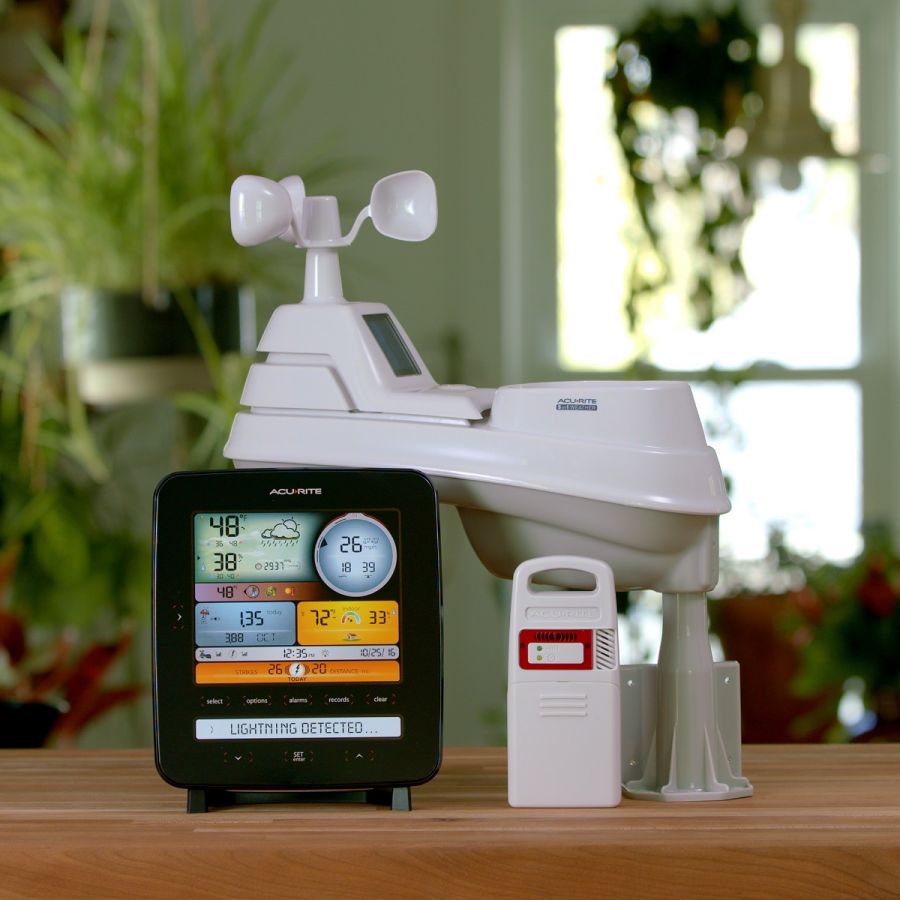The importance of accurate weather forecasting cannot be overstated. From daily commutes to agricultural planning, weather impacts our lives in countless ways. As we step into 2024, advancements in weather forecasting technology are making it more accessible, reliable, and precise than ever before. One of the most exciting developments driving this shift is the rise of modern weather stations. These devices, once seen as high-end equipment for scientists, are now affordable, user-friendly, and available to the general public. Let's explore how weather stations are revolutionizing the way we predict the weather.
What Are Weather Stations?
At their core, weather stations are devices designed to collect data on atmospheric conditions in a specific location. These compact, often wireless systems measure a wide range of parameters, including:
- Temperature: Tracks the current, high, and low temperatures.
- Humidity: Measures the moisture content in the air.
- Wind Speed and Direction: Provides real-time data on how fast the wind is blowing and from which direction.
- Barometric Pressure: Detects changes in atmospheric pressure, which can indicate approaching weather systems.
- Rainfall: Monitors the amount of precipitation in a given time frame.
The best part? Modern weather stations are now equipped with digital displays, mobile apps, and Wi-Fi connectivity, allowing users to access real-time data from anywhere.
How Weather Stations are Improving Forecasting in 2024
1. Hyperlocal Data Collection
Traditional weather forecasts rely on data from national and regional weather stations, which are often spaced far apart. This can result in general predictions that may not account for local variations. In contrast, personal weather stations provide hyperlocal data tailored to a specific area. Whether it’s your backyard, farm, or construction site, a personal weather station gives you up-to-the-minute weather information that’s more accurate and relevant to your immediate surroundings.
In 2024, the proliferation of personal weather stations has expanded the network of real-time weather data points, helping meteorologists refine their forecasting models and offer more precise predictions.
2. Community-Based Forecasting Networks
With the increasing number of personal weather stations, 2024 is seeing the rise of community-based weather networks. These networks allow users to share data from their weather stations with other users or public services. Platforms like Weather Underground and Netatmo have created vast networks of weather stations that contribute data from diverse geographical areas. This crowd-sourced approach enhances the accuracy of weather predictions by feeding vast amounts of real-time data into advanced weather modeling systems.
3. Machine Learning and AI Integration
One of the most exciting trends in weather forecasting is the integration of AI and machine learning. These technologies can analyze the massive datasets generated by weather stations and identify patterns that human meteorologists may miss. AI-based systems can learn from historical weather data, recognizing trends and making predictions with incredible accuracy. In 2024, personal weather stations are increasingly being integrated with AI platforms, enabling smarter forecasting tools that can predict weather changes at the hyperlocal level.
4. Cost-Effective and Easy to Use
Gone are the days when weather stations were reserved for experts. In 2024, modern weather stations are designed with user-friendliness in mind. Many models come with simple installation processes, intuitive apps, and automated features. Prices have also become more accessible, allowing homeowners, farmers, and businesses to invest in these systems without breaking the bank.
Benefits of Using a Personal Weather Station
1. Agricultural Planning
Farmers rely heavily on weather conditions to plan planting, watering, and harvesting. With a personal weather station, they can monitor soil moisture, temperature, and rainfall with precision, optimizing their operations and increasing crop yields.
2. Safety and Emergency Preparedness
Having real-time, accurate weather data at your fingertips helps you prepare for extreme weather events, like storms, heatwaves, or floods. With precise local data, individuals and communities can make informed decisions about evacuation plans, securing properties, or adjusting daily activities to avoid dangerous weather conditions.
3. Energy Efficiency
Personal weather stations can help homeowners improve energy efficiency. By tracking temperature, wind, and solar conditions, homeowners can adjust heating, cooling, and energy usage, reducing costs and their carbon footprint.
4. Recreational Use
For outdoor enthusiasts, weather stations provide critical information for activities like hiking, sailing, and gardening. Whether you’re planning a weekend camping trip or organizing an outdoor event, knowing the exact weather conditions helps you prepare and enjoy your experience without unexpected surprises.
Conclusion: A Bright Future for Forecasting
The year 2024 is a turning point in the world of weather forecasting, with personal weather stations playing a key role in making forecasts more accessible, accurate, and relevant. These devices offer an unprecedented level of insight into local weather conditions, empowering users to take control of their own forecasts. As weather stations become more integrated with AI, community networks, and other smart technologies, the future of weather forecasting looks clearer—and more reliable—than ever.
Whether you're a farmer, a commuter, or just someone who wants to know if you should pack an umbrella, a personal weather station can transform the way you plan for the weather in 2024.

